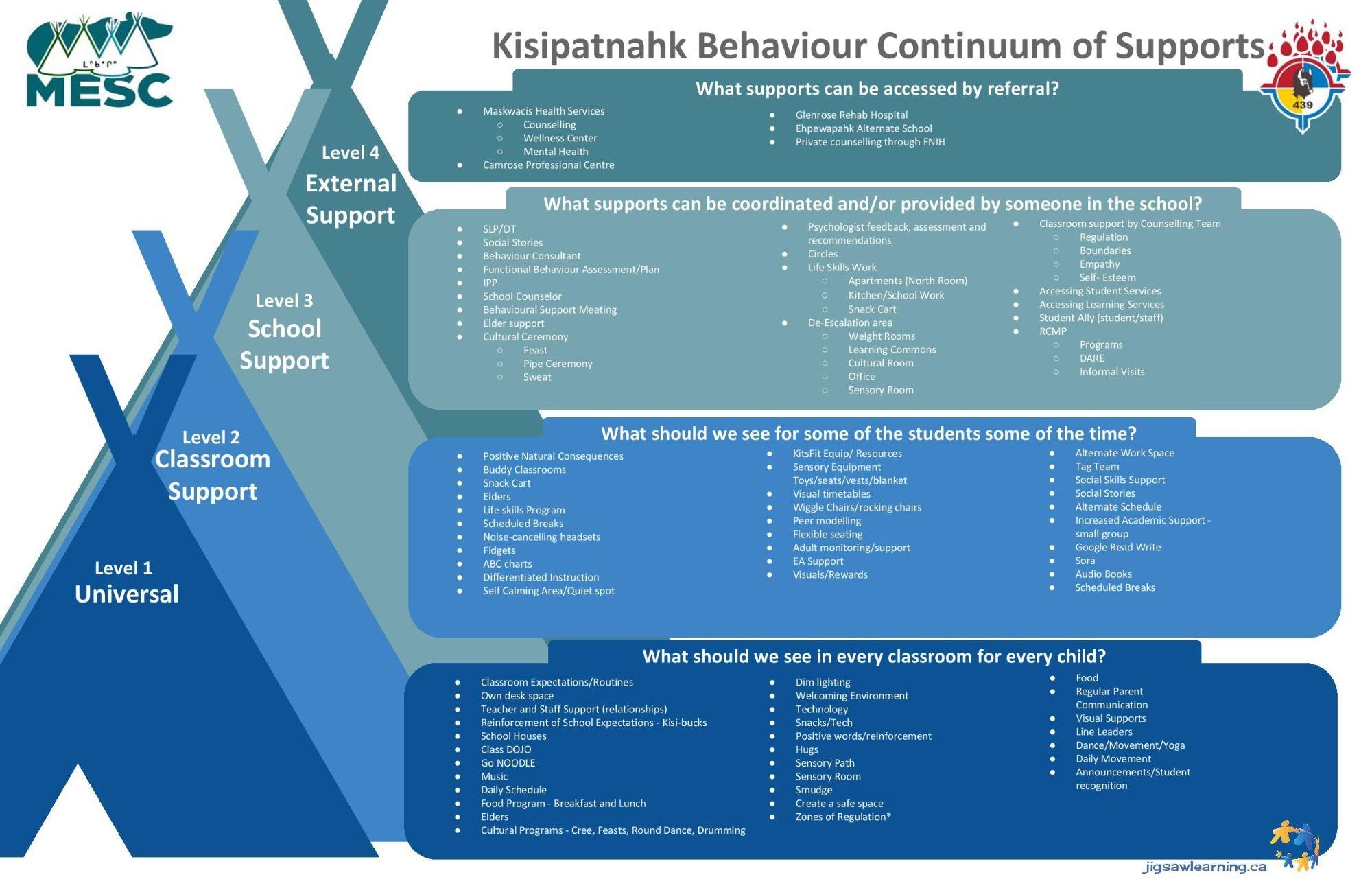
Engage in learning that fits your schedule!
This online course will provide you with the 10 Key Components to consider within a Responsive Behaviour Support framework to help organize your school-wide processes to ensure a safe and caring learning environment for students that is grounded in the work of Collaborative Response.
Register Now
The following resources have been developed for use in schools, in relation to Responsive Behaviour Supports.
General Resources
| Responsive Behaviour Support Poster - A visual overview of the 10 components of Responsive Behaviour Support. |
Responsive Relationships
Involves taking the opportunity to respond readily and understand aspects of others’ life experiences. Developing positive, caring and trusting relationships with students, colleagues and parents is the foundation of all of the key components.
Resources and Templates
| Reflection Organizer - Self - This is a reflective document that includes sentence starters intended for focusing upon personal experiences that may have a direct impact on your ability to connect with and build relationships with your students. |
| Reflection Organizer - Colleagues - This checklist will help you explore the relationship that you have with your colleagues which contributes to the overall success for students. |
| Reflection Organizer - Students - This reflective template will provide you with a list of tips for building better relationships with students and help to assess key priority areas for teacher growth. |
Social/Emotional Instruction
Social/Emotional instruction is as important to teach as academic skills. Students who struggle with behaviour challenges often have a difficult time managing their emotions and have trouble interacting and getting along with peers. More often than not, behaviour is a response to the inability to self-regulate or is a manifestation of environmental factors, emotions, and thoughts.
Resources and Templates
| (K-12) Social/Emotional Resource List - Useful resources that support the planning, implementation and practice of social/emotional instruction. |
Routines and Classroom Environment
Researchers agree that all children respond and appreciate consistency within the classroom environment. Creating a safe, caring and nurturing learning environment promotes positive behaviour responses and reduces disruption in the daily life of the classroom.
Resources and Templates
| Checklist for Routines and Procedures - A quick checklist for consideration for classroom routines. |
| Routines Organizer - This template can be used at the beginning of the school year to create your classroom routines and explicitly organize the procedures to be taught into organized steps. |
| Teacher Reflection for Routines and Classroom Environment - This document serves as a reflective tool at any time during the school year to gather classroom data, determine key issues and create a new action plan for your classroom. |
Explicit Behaviour Expectations
Behaviour expectations work to ensure that all staff and students consistently understand the importance of and are committed to the entire student community. They serve as guidelines for behaviour and apply all children and adults across all settings in the school.
Resources and Templates
| Behaviour Matrix Template (1) |
| Behaviour Matrix Template (2) |
Samples
| Example of Completed Matrix - Kisipatnahk Collaborative Character Matrix developed by Kisipatnahak School. Copyright 2020, L. Ouelette- Kisipatnahak School, Maskwacîs Education Schools Commission, AB. Shared with permission. |
Responding to Behaviour Concerns
There are a variety of Tier 1 and Tier 2 supports for all school staff to consider when the flow of their classroom appears to be disrupted. These supports are typically dealt with by the classroom teacher in conjunction with school-wide behaviour procedures.
Samples
| Behaviour Continuum of Supports Sample - Behaviour Continuum of Supports developed by Kisipatinahk School. Copyright 2021, L. Ouellette - Kisipatinahk School, Maskwacîs Education Schools Commission, AB. Shared with permission. |
Responding to Re-occurring Behaviour Concerns
It is concerning when behaviour challenges continue to be a significant concern for students and staff. Responding to challenging behaviour after Tier 1 and Tier 2 supports have been exhausted requires a systematic approach that is understood by staff at all levels of an organization.
Behaviour Intervention Team
There are many levels of collaborative team structures to ensure the needs of all students are being met within a school. Behaviour Intervention Teams are made of a group of people who are able to provide additional support and connect them with resources to facilitate success.
Collecting and Analyzing Data
Although there are strong universal supports in the classroom for students often, there are some students who need targeted behaviour supports. Effective data collection allows us to pinpoint and respond to these student’s needs and make decisions about interventions and support based on that data.
Templates and Resources
| Samples of Anecdotal, Frequency Charts, ABC - Frequently used by staff for tracking challenging behaviour. |
Crisis Management
Crisis management is a central component to a safe and caring school. Schools develop processes and procedures for dealing with existing and potential student and school crises. These processes allow us to respond in a timely manner, develop a proactive plan and direct the student, staff and family to the most appropriate supports available.
Behaviour Support Plans
Students who are unable to respond to some of the universal strategies used in our schools require intensive support. These interventions and strategies need to be documented in a formal behaviour support plan. This requires that staff are involved in a process to understand the function (or reason why) the student continues to experience challenging behaviour and respond with a strength-based approach.













